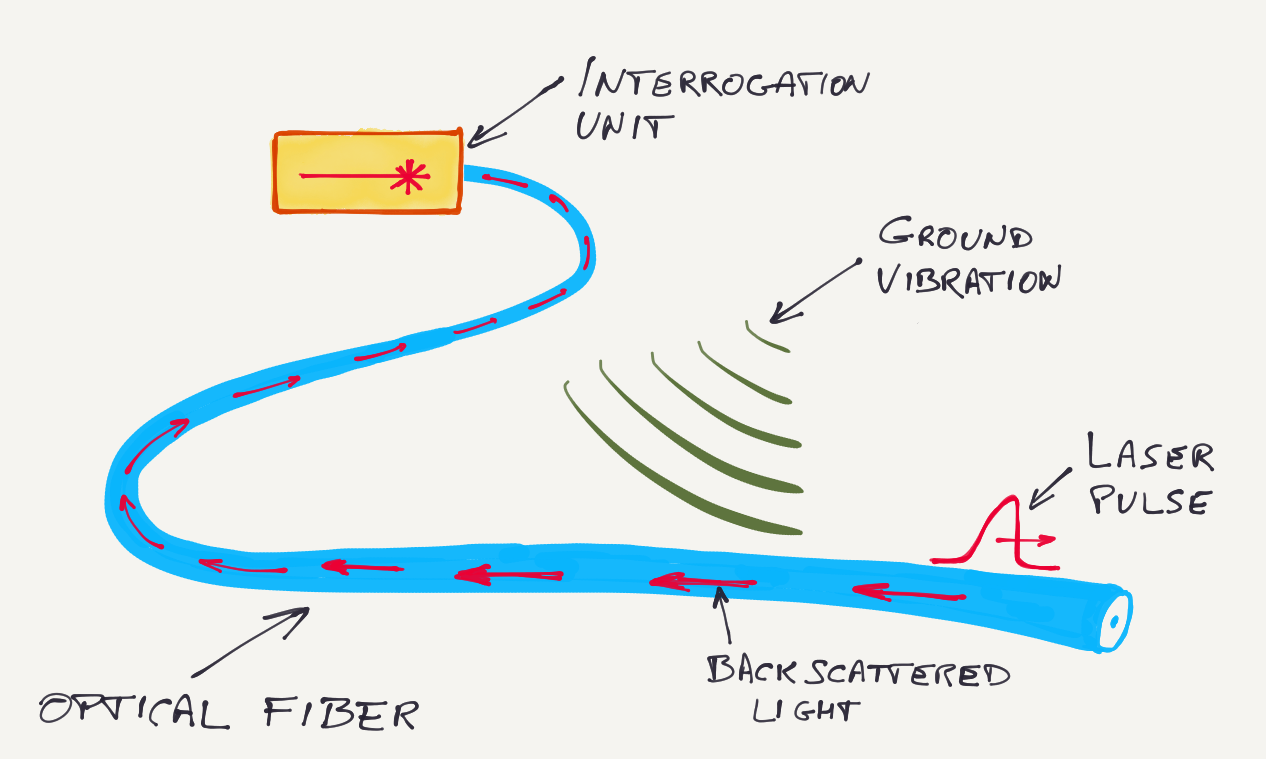
Back in the 70's, during the first experiments on optical fibers, scientists realized that by varying the temperature of the fiber or by exerting some mechanical strain on it, it was possible to change the properties of the transmitted light. They understood that by measuring the characteristic of the light it is possible to measure some parameters of the environment surrounding the fiber.
The idea of using an optical fiber as a sensor was born.

Despite the glass (silica) fibers are made of is extremely pure, a light pulse propagating along the fiber generates at every point a sort of very faint echo, which backpropagates to the fiber input. By measuring the time that this backscattered light takes to come back, an instrument can determine the position along the fiber where the reflection took place. Moreover, by analyzing some of the characteristics of this light echo properly, it is possible to measure the local properties of the environment (such as temperature or strain) at that point.
This is the way in which a distributed optical fiber sensor works. A distributed optical fiber sensor is equivalent to the concatenation of tens of thousands of sensors and it can measure physical fields, such as temperature, strain and vibration. For example, distributed optical fiber sensors can measure vibrations every few meters along kilometers long fibers; this is equivalent to a distributed microphone, which can be used, for example, to monitor the ravines along which debris flows usually occur.
